Viscosity? If you’ve never heard this word before you might think it’s a new brand of kitchen cleaner! But of course, if it’s not a kitchen cleaner, what in the world is it?
We’ll help define viscosity in our easy to understand explanation of how it works below, but the goal of this experiment is to help kids ‘see’ viscosity in action.
Collect your materials, print out our detailed instructions, and watch our demonstration video to explore how the consistency of a liquid impacts objects.
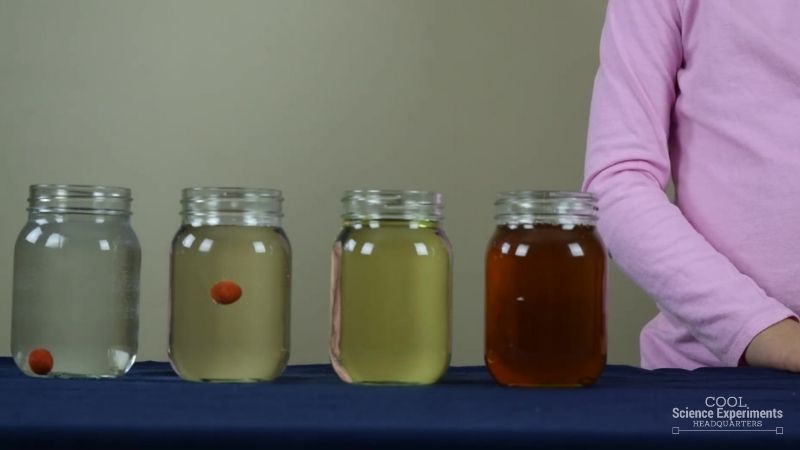
JUMP TO SECTION: Instructions | Video Tutorial | How it Works
Supplies Needed
- 4 clear glass jars of the same size (we used pint-sized mason jars)
- 4 Marbles
- Water (enough to fill one jar)
- Corn Syrup (enough to fill one jar)
- Cooking Oil (enough to fill one jar) We used Vegetable Oil, but any Cooking Oil will work.
- Honey (enough to fill one jar)
Viscosity of Liquids Science Lab Kit – Only $5
Use our easy Viscosity of Liquids Science Lab Kit to grab your students’ attention without the stress of planning!
It’s everything you need to make science easy for teachers and fun for students — using inexpensive materials you probably already have in your storage closet!
Viscosity of Liquids Science Experiment Instructions
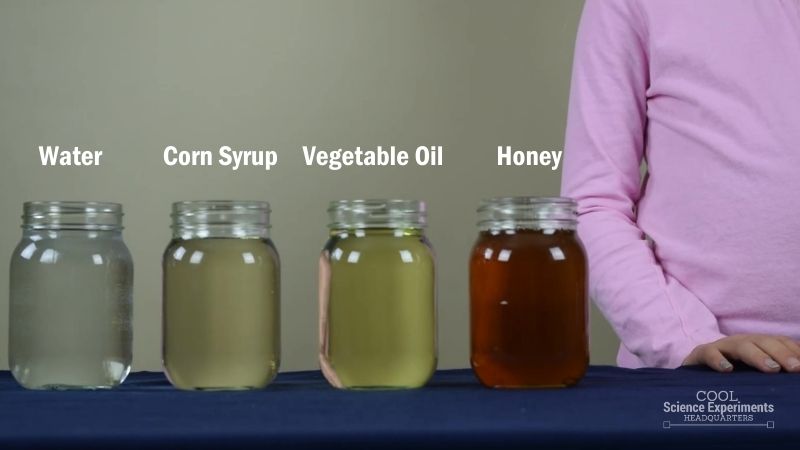
Step 1 – Gather four clear glass jars and fill one with water, one with corn syrup, one with cooking oil (we used vegetable oil, but any cooking oil will work) and one with honey.
As you are pouring the liquids, take a moment to make observations. What do you notice as you pour the water into the glass? What about the corn syrup, the cooking oil and the honey? Did you notice anything different?
Do you think the liquid will impact what happens when a marble is placed into each jar? What do you think will happen? Write down your hypothesis (prediction) and then continue the experiment to test it out and to find out if you were correct.
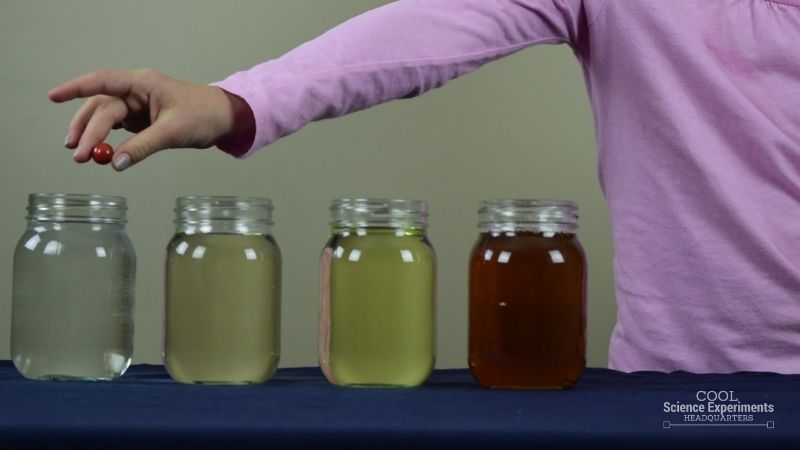
Step 2 – Carefully drop one marble into each jar. Drop one marble at a time and observe what happens to the marble when it enters the liquid. You’ll notice right away that the marble behaves differently in each jar. Was your hypothesis correct? Do you know why some marbles sink to the bottom of the jar quickly and some marbles sink to the bottle of the jar slowly?
Find out the answer in the how does this experiment work section below. It also contains ideas on how you can expand on the experiment.
Viscosity of Liquids Science Experiment Video Tutorial
Watch the Viscosity of Liquids Science Experiment Step by Step Instructions
How Does the Science Experiment Work?
The question answered in this experiment is: how does the consistency of a liquid impact how long it will take for a marble to sink in a jar of that liquid? A unique property of liquids is something called viscosity.
Viscosity is a liquid’s resistance to flowing.
Viscosity depends on the size and shape of the particles that make the liquid, as well as the attraction between the particles. Liquids that have a LOW viscosity flow quickly (ie. water, rubbing alcohol, and vegetable oil). Liquids that have a HIGH viscosity flow slowly (ie. honey, corn syrup, and molasses). Viscosity can also be thought of as a measure of how “thick” a liquid is. The more viscous (or thick) a liquid is, the longer it will take for an object to move through the liquid.
In our experiment, the marbles took longer to sink when dropped into the jars filled with corn syrup and honey than they did when dropped into the jars filled with water and cooking oil. Therefore, we’ve shown that corn syrup and honey have a higher viscosity (or are more viscous) than water and cooking oil.
Viscosity of Liquids Science Lab Kit – Only $5
Use our easy Viscosity of Liquids Science Lab Kit to grab your students’ attention without the stress of planning!
It’s everything you need to make science easy for teachers and fun for students — using inexpensive materials you probably already have in your storage closet!
More Science Fun
- How long will it take? Expand on the experiment, by estimating how long it will take for the marble to sink to the bottom of the jar? Then set a timer and find out how close your estimate was. Tip: Timing the marble, works best when using liquids that have a high viscosity (ie. honey, corn syrup, and molasses).
- The Pouring Test – When you are finished dropping the marbles into the jars, try pouring the liquids one at a time into another jar. You will notice that it takes longer to pour out the Corn Syrup and Honey than it does to pour out the Water and Cooking Oil. This is because the viscosity of a liquid can also be observed by how slow (or fast) it takes to pour the liquid.
- How Does the Consistency of a Liquid Impact Magnetic Attraction – This experiment shows how the viscosity of a liquid impacts how fast (or slow) the objects move toward a magnet.
I hope you enjoyed the experiment. Here are some printable instructions:
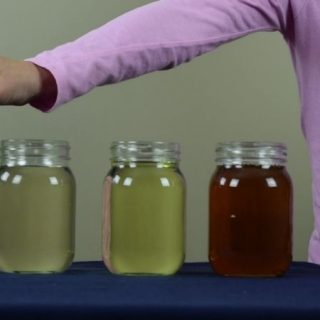
Viscosity of a Liquid Experiment Science Experiment
Materials
- 4 clear glass jars of the same size (we used pint sized mason jars)
- 4 Marbles
- Water (enough to fill one jar)
- Corn Syrup (enough to fill one jar)
- Cooking Oil (enough to fill one jar)
- Honey (enough to fill one jar)
Instructions
- Gather four clear glass jars and fill one with water, one with corn syrup, one with cooking oil and one with honey.
- Carefully drop one marble into each jar. Drop one marble at a time and observe what happens to the marble when it enters the liquid. Which marbles sink to the bottom of the jar quickly and which marbles sink to the bottle of the jar slowly.
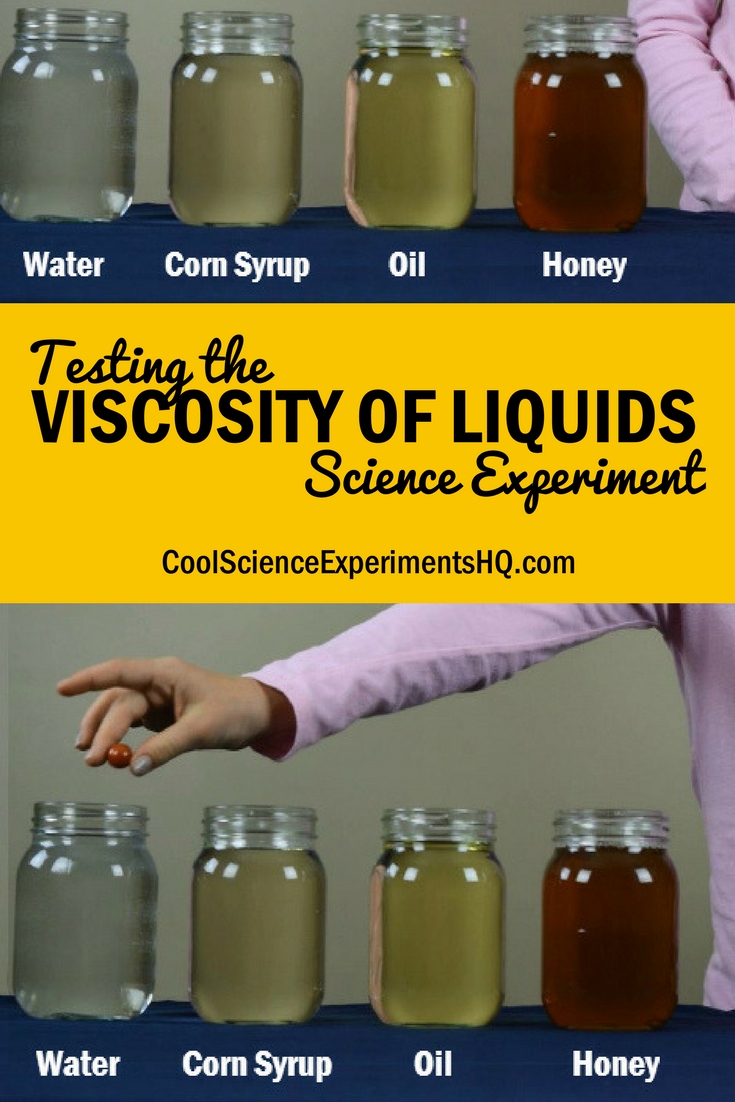
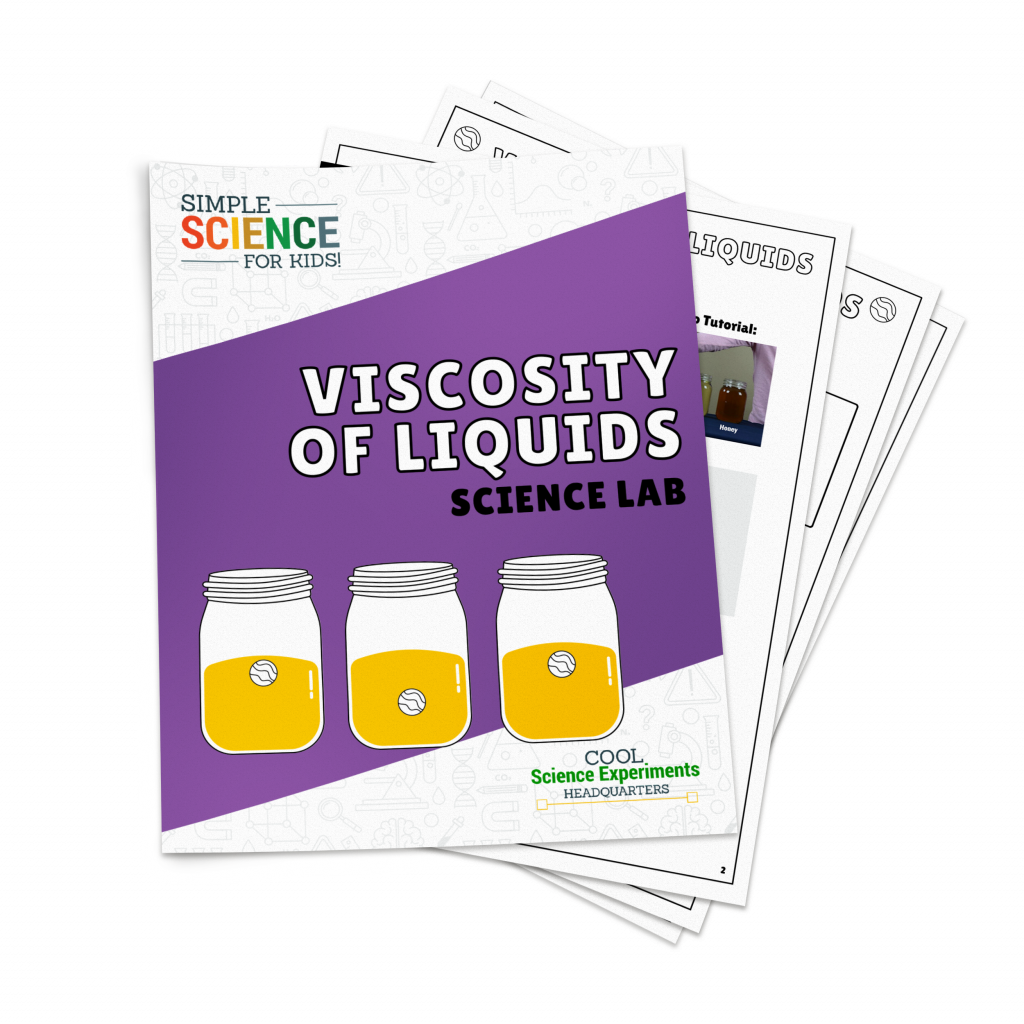

The honey and corn syrup has a higher density than the water and oil because ther are more particals in a certain amount of space making it slower for the marball to sink to the bottom.
Some liquids are less dense. Some liquids are more dense. The denser liquids make the marbles flow slower. The less dense liquids (water and oil) make the marbles flow faster. The more dense liquids (honey and corn syrup) make the marbles flow slower.
Viscosity is a measure of a fluid’s resistance to flow. It describes the internal friction of a moving fluid. A fluid with large viscosity resists motion because its molecular makeup gives it a lot of internal friction. A fluid with low viscosity flows easily because its molecular makeup results in very little friction when it is in motion…… So it is to do with the size and shape of the molecule rather than the density. If you heat up a liquid the density will change slightly but the viscosity will change a lot.
Honey is much thicker than oil, so the process is a little slower than the marble goes to the bottom of the honey.